The Red Thread
Liliane Tomasko. Kerlin Gallery, Anne's Lane, South Anne Street, Dublin. Until April 13th kerlin.ie
★★★★
Liliane Tomasko’s paintings in The Red Thread are mildly but enduringly disorienting. Somehow the picture plane never quite comes into focus. Bands of colour, mostly applied in broad, gestural swathes, seem to weave in front of and behind it, like coloured ribbons unrolling in three-dimensional space. The pigment is quite dilute, occasionally opaque but more often translucent. Nor do the colours sit happily with each other, further reinforcing the impression that the surface just won’t settle down.
Given that one point of reference is the rumpled, crumpled state of bed linen and abandoned nightclothes in the morning, when the sleepers have woken and departed, the feeling of disarray, of things not being resolved, begins to make sense. Tomasko doesn’t do ingratiating, doesn’t opt for harmonic colour arrangements or neat compositions. Several titles indicate the paintings are accounts of or related to dreams, and the show’s introductory note suggests that they are in a sense representative of gateways into another state of consciousness, not so much specific dream narratives, say, as that hazy realm between sleep, dreaming and wakefulness, when perceptions and emotions overlap and conflict.
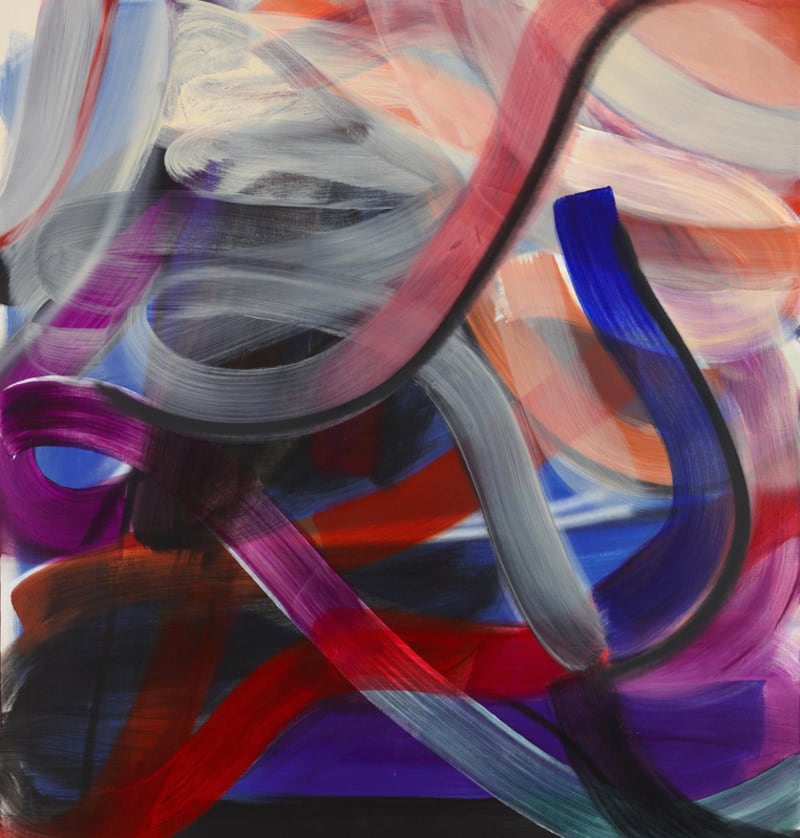
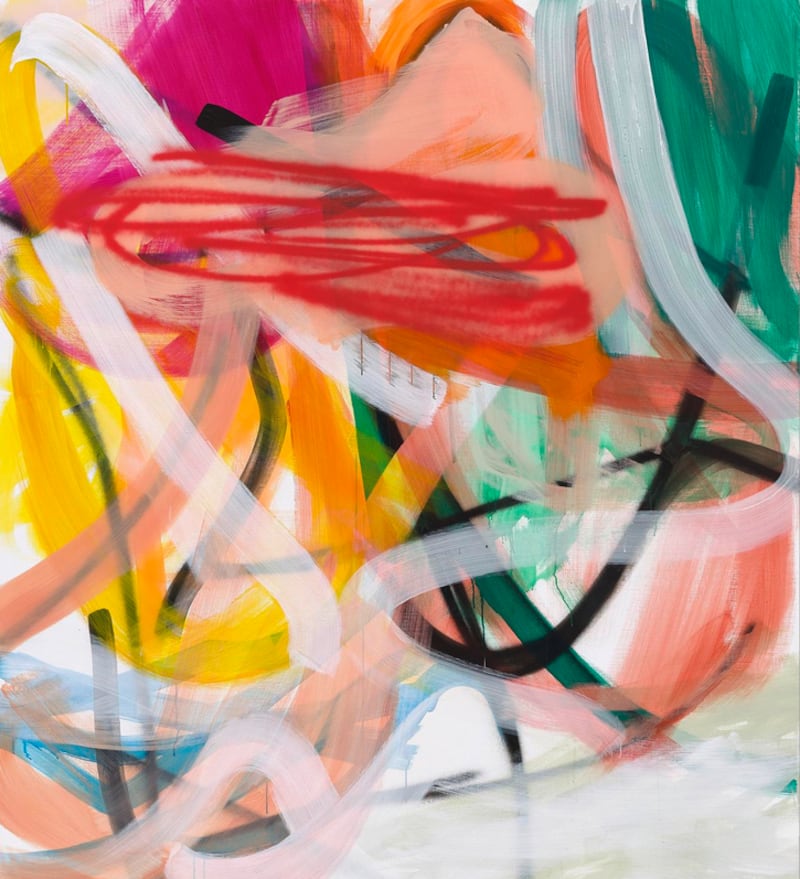
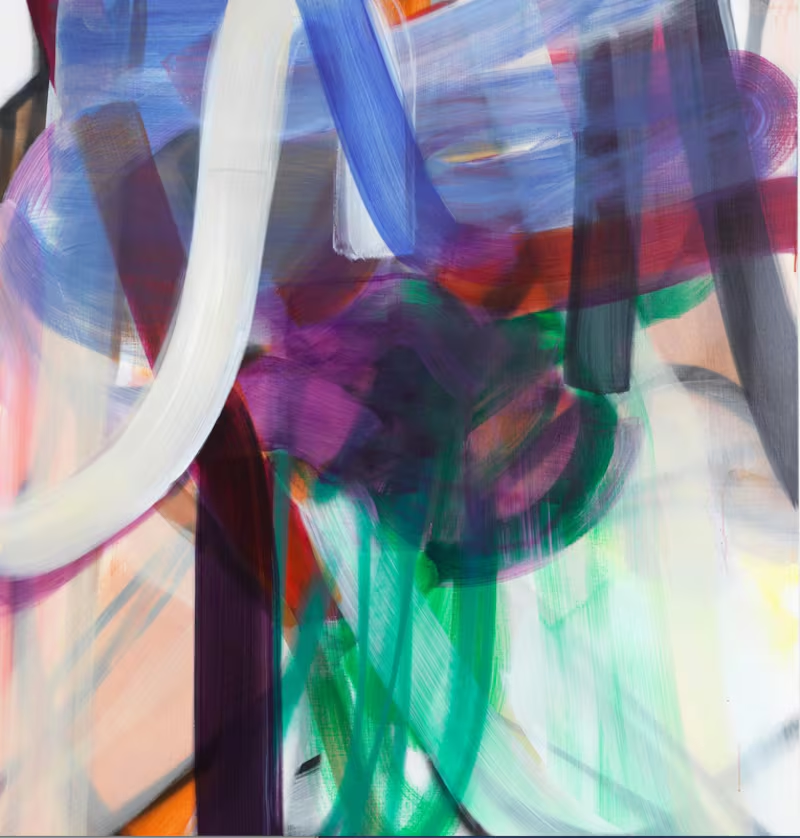
The consequence of all this is that the paintings make for slightly uncomfortable viewing, not because their content is in any way disturbing – they are, after all, abstract – but because they are designed that way. The discomfort arises when Tomasko seems to be making a certain kind of painting, and then takes the process off in another direction, declining the conventional paths to pictorial resolution and thwarting our expectations. Running the risk of alienating your audience has to count as a high-risk strategy, but in aiming for calculated uncertainty, that is what she is doing. In effect she’s saying: don’t come to me looking for neat solutions, life’s not like that.
Michael Coleman’s Still Life
Kevin Kavanagh Gallery, Chancery Lane, Dublin. Until April 6th kevinkavanaghgallery.ie
★★★★
Michael Coleman remarked once that his paintings “are less made than discovered”. He was either unwittingly echoing or, it could be, anticipating Gerhard Richter, who said of his abstract paintings that he had no intention at the outset of putting anything into them, it was more a matter of discovering them. Like Richter, Coleman has over the years alternated very freely between abstraction and representation, in ways that have made nonsense of any idea of a signature style. Someone who goes from a mode of semi-naive realism to austere minimal abstraction, and manages to do so without engendering any feeling of inconsistency or contradiction, clearly has no interest in the whole notion of signature style. But, equally, Coleman certainly hasn’t made things easy for himself: the market loves consistency.
In the late 1970s he established himself as an abstract painter, winning awards and acclaim. He seemed set on a particular trajectory. Then he spent some years in Vienna. During this time he did not so much change direction as develop a more critical sensibility. He seemed to evaluate the process of making art differently, perhaps more vehemently. Back in Ireland in the 1990s, while still making bodies of work – abstract paintings, essentially – on a significant scale, it seemed as if the fate of any of those works was balanced on a knife edge, dependent on surviving Coleman’s quiet scrutiny.
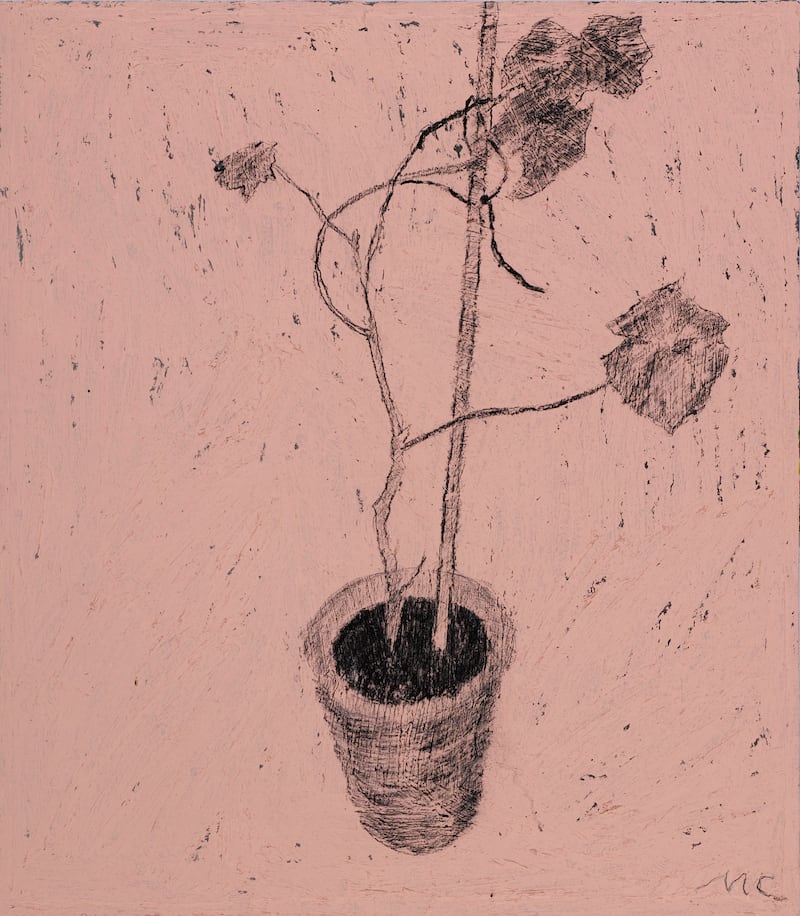
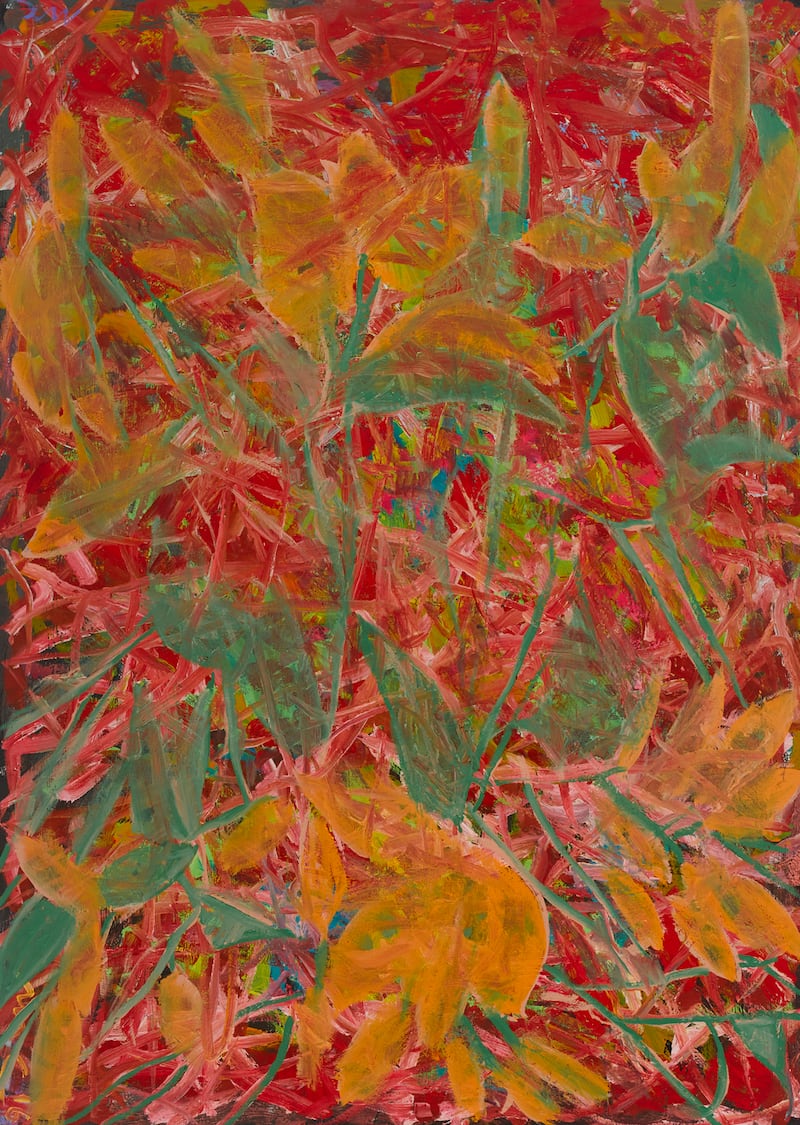
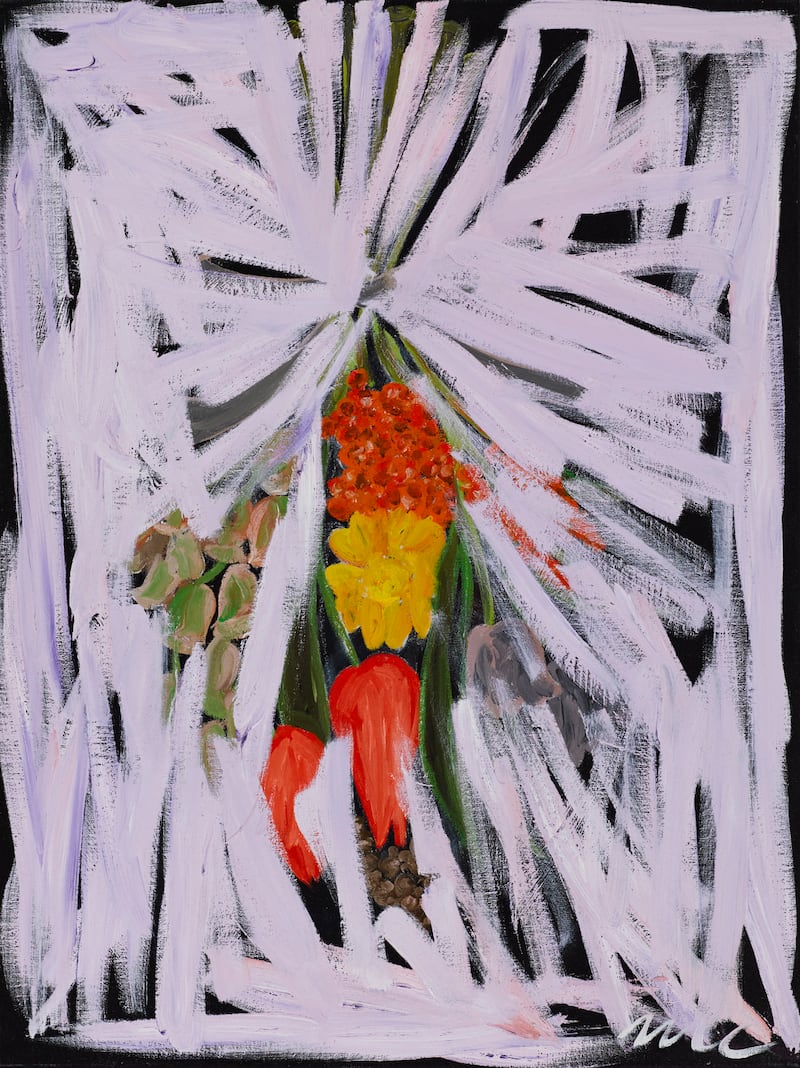
It was when he began to make representational paintings, though, in a straightforwardly descriptive, affectless manner, that any notion of a predictable career trajectory was ruled out. Not that there was any conversion from abstraction to representation. It was more that what kind of painting Coleman might discover when he set about working was more than ever unpredictable. He had from early on been given to building up work in layer over layer, eventually, in Into Black, excavating and exposing some of the many layers of paint underlying a top coating of black.
That process of layering, with underlying strata indicated in a gnarled, lumpy surface, is still to be seen in Michael Coleman’s Still Life. On one wall, a shelf is stocked with a number of small paintings, some partly obscuring others, thickly painted. It is called, collectively, Private Collection, and it is like a distillation of the show as a whole. Still Life is an accurate enough label. Plants and flowers are the dominant subjects, very specifically so in some cases, as a number of works feature single stems with recognisable flowers.
Recognisable, but usually arrived at, in that they are the top layer on a bumpy terrain of irregular impasto, with, in the various surrounding passages of paintwork, the implication that things might have developed in another way. One possibility is evident in the Hidden Flowers works, in which the flowers just manage to escape over-painting. A number of spare, monochrome brush drawings of ceramics have a calligraphic, oriental quality. They are precise and well judged.
One of the larger paintings, Tiger Lilies, is a concentrated mass of activity. You can see the correspondence between the title and the painting, even though it’s not a straightforward representation and could be abstract. It could be a chromatically challenging abstract. In fact, as it is as if its tight range of colours – not, as with Liliane Tomasko’s paintings, natural bedfellows – are heatedly trying to negotiate peaceful co-existence and never quite reaching a deal. Yet the overall effect is compelling and formidable.
The term Still Life is stretched sometimes, as in a detailed depiction of Conolly’s Folly, the obelisk monument at Castletown, which, to be fair, is itself a kind of still life. It is a busy exhibition that includes a lot of work but feels crowded only where it is supposed to feel crowded, and it is well worth seeing as an installation in itself, apart altogether from the quality of the individual works. Besides which, the show’s title really makes sense when you gauge it as an installation and not a collection of pictures.











